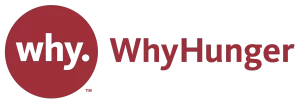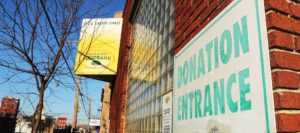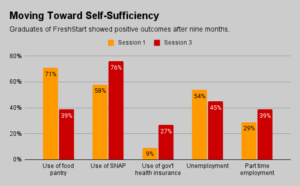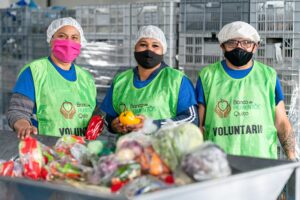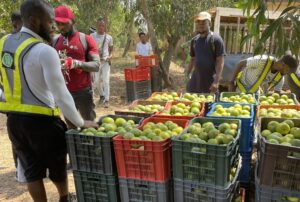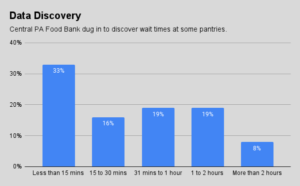A foundation based in Paraguay is seeking to work with food banks across the globe to help it spread its groundbreaking method of moving families out of poverty.
The Poverty Stoplight seeks to empower individual families to better understand the exact nature of their poverty and the specific steps they can take to remedy it. The goal is to help families break down the overwhelming concept of poverty into a series of manageable issues that can be solved through simple interventions.
Compared to the usual method of measuring poverty as a single number or ranking to inform governmental decision-makers, Poverty Stoplight puts actionable information into the hands of individual families. It seeks to reflect the multi-dimensional nature of poverty, and the fact that every family’s situation is different.
“A family that is ultra-poor in income may not be in food,” explained Martin Burt, PhD, the Founder and CEO of Fundacion Paraguaya.

Families engage in the visual app available through mobile phones, tablets or computers to tap red, yellow or green to indicate where they stand along 50 or so dimensions. The indicators are specific yet easily understood, such as whether or not they have a steady income, access to nutritious food, a budget, identification, vaccinations, even healthy teeth and separate bedrooms.
The resulting dashboard shows the family’s standing along every dimension, helping to illuminate the areas where they need the most help. Families that complete the exercise “understand that they’re not poor in everything,” Dr. Burt said. They also have a pathway for moving forward that reflects actionable and achievable goals.
Dr. Burt, who is also a member of the Board of Directors at The Global Foodbanking Network, sees food banks as uniquely qualified to broaden usage of the Poverty Stoplight because of the trust they hold among families. “Families allow us to touch them, and this is an act of trust,” he said.
The foundation is already working with about 400 organizations, such as schools and local governments, in 30 countries, including the U.S., where it has a presence in ten cities. Through the Salvation Army it is working with homeless populations in Orange County, for example, and in New Orleans it is working with formerly incarcerated black youth.
While food banks do not have the capacity to address household deficits beyond food, they can facilitate connections to other service providers. “There are entities that provide wheelchairs, dental care, vision care and so on in every community in the world,” Dr. Burt said. “The food bank empowers families to go search for these solutions.”
So far, the foundation has seen that families using the stoplight are more likely to overcome poverty because they “have a plan of action and they recover faith in themselves,” Dr. Burt said. The foundation is in the process of conducting a randomized controlled trial to prove the Poverty Stoplight’s efficacy.
Placing technology into the hands of individual families has been key to Poverty Stoplight’s success, Dr. Burt said. “It’s amazing how easy it is because of technology to get families involved in understanding why they’re going to the food bank” in the first place, he said.
Compared to surveys that extract information from families and remain secret, families own their stoplight dashboards and can share the information with whomever they want. Many do, posting their progress as reds and yellows turn into greens.
“The stoplight is an integrated way to bring all the problems and solutions to one unit of analysis that is the family household, not the food bank or the government agency,” Dr. Burt said.
He added, “This looks complicated, but it’s actually very easy.” — C.C.
Like what you’re reading?
Support Food Bank News


